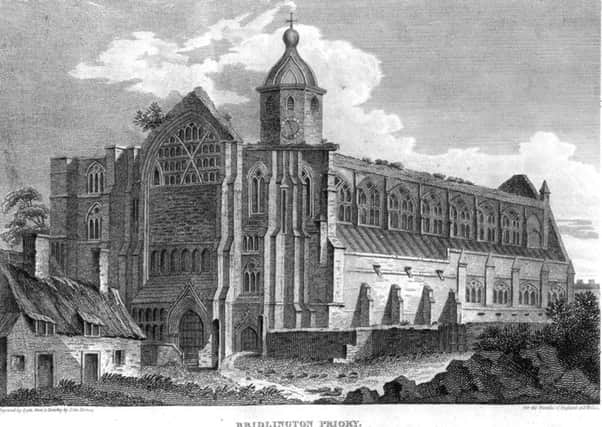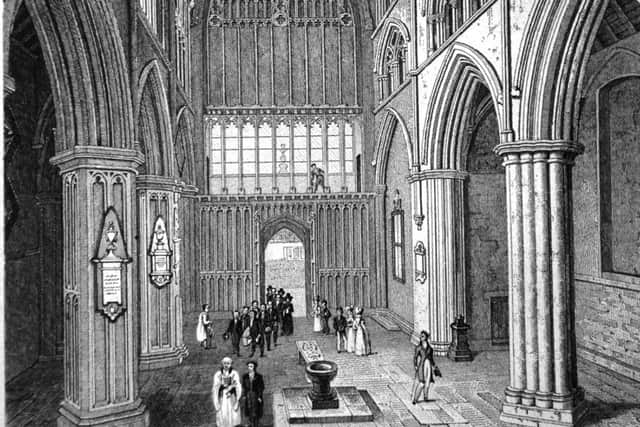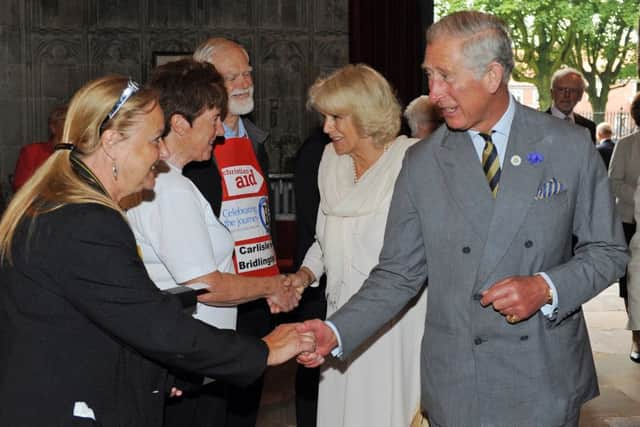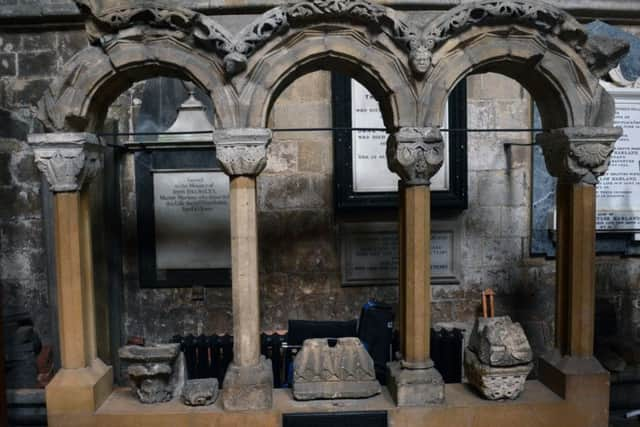Prior Knowledge


It was part of a monastic complex, built from the 12th century onwards. The entire area’s dominance and influence was felt far and wide until brutally dismantled under the dissolution of the monasteries.
Only the nave (of the original Priory Church) and bayle (or gatehouse) now remain of the complex. Yet, as part of its Augustinian heritage, Bridlington Priory Church today endeavours to encompass the three great monastic themes of prayer, study and hospitality.
Advertisement
Hide AdAdvertisement
Hide AdA Saxon church was noted in the Domesday survey in 1086, and the Augustinian priory was founded in 1113. It is speculated that the site was chosen by the priory’s founder Walter de Gant, Lord of the Manor, son of one of the new aristocracy following the Norman conquest.


The complex took decades to build, although two towers either side of the western entrance were never completed before the Reformation. The priory church took on a cruciform design and was exceedingly large, much larger than most cathedrals.
The Augustinians’ beliefs may have been based on the writings of Augustine (AD 354-430) – the bishop of Hippo Regius (modern day Annaba, Algeria). He is viewed as one of the most important Church fathers in Western Christianity.
They came to England soon after the Norman Conquest. Bridlington was the first Augustinian Priory established in Yorkshire.
Advertisement
Hide AdAdvertisement
Hide AdThere were two main strands of medieval religious communities. There were monks living in an enclosed community who gave hospitality. Then, there were friars, such as the Franciscans, who went out to give spiritual guidance and help where needed.


The Augustinians lived a cloistered life, but exercised spiritual and pastoral care within communities.
Thus, the Augustinian Bridlington priory church nave was always in parish use. Besides the nave, the church included a transept, a large stately tower and choir.
Among the adjoining monastic buildings, mainly on the south side, were: the prior’s hall, cloister, chapter house, courtyard, canon’s dormitory, infirmary, chapel, treasury library and bakehouse.
Advertisement
Hide AdAdvertisement
Hide AdBuilding work within the priory church had started in the north west corner of the nave, and the architectural style there, and along the north side, is probably Early English, while the opposite side is more modern or maybe even cruder English Gothic.


The priory became wealthy through sheep farming, acquiring lands throughout Yorkshire and Lincolnshire.
The most noted of Bridlington Priors was John of Thwing, born about 1320 and in charge of the priory from 1362 until his death in 1379. He was said ‘to shrink from vainglory as from a deadly poison’.
Twenty two years after his death he became the last English saint created before the Reformation and an elaborate shrine was within the choir of the priory church. People from far and wide made a pilgrimage to worship at it.
Advertisement
Hide AdAdvertisement
Hide AdThe House of Lancaster regarded Prior John highly and later in the 15th century he was also venerated by Henry VI (1421-1471). A choir school was inaugurated by Henry at the Priory. Edward IV renewed the grant of the church of Scarborough to the priory.


During the 15th century the south west corner of the nave collapsed and was rebuilt in the Perpendicular style, with several windows having a different appearance to those adjoining.
The last prior before the Reformation in the 16th century was William Woode. He became associated with the Pilgrimage of Grace, an uprising in Yorkshire in late 1536 against Henry VIII’s break with the Roman Catholic church and the Dissolution of the Monasteries. There was also a fear, which turned out to be true, that Bridlington Priory, along with other large monasteries, would be swept away.
Woode was found guilty of supporting the rebels and treason. In his defence he claimed the rebels had said they would cut off his head if he did not help them. He was hanged at Tyburn while the Bridlington Augustinian canons dispersed.
Advertisement
Hide AdAdvertisement
Hide AdMost of the Bridlington monastic complex was taken down. Within the priory church only the nave was allowed to remain standing because it was used as a parish church. The church’s tower, transept and choir were demolished and St John’s shrine destroyed. One of Henry VIII’s agents, the Duke of Norfolk, tasked with destroying Bridlington Priory, was said to have stood in awe at the church.
Outside, all the monastic buildings were cleared, with the exception of the gatehouse.
The remaining nave has more recently undergone a number of restorations, most notably in the latter half of the 19th century when Sir George Gilbert Scott added a large window to the east end and the western towers were finally completed, albeit in different styles.


A new small shrine to Saint John may be located outside in the graveyard. It is roughly in the same position as it was in the former choir.
Advertisement
Hide AdAdvertisement
Hide AdHelping to celebrate the 900th anniversary festivities of Bridlington Priory in 2013 were the Prince of Wales and Duchess of Cornwall. Local stonemason Adam McTurk carved two corbels depicting their heads, which are on either side of the entrance to the former prior’s lodging.
The priory is open every day and welcomes visitors. Further information from www.bridlingtonpriory.co.uk
Special thanks to the Rev Matthew Pollard of Bridlington Church Priory.